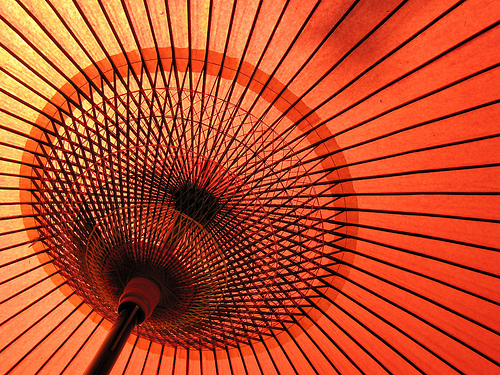
Parasols, like this one in Nara Park, are widely used in Japan – mainly by young women trying to maintain a fashionably light complexion
Unmissable Books about Japan
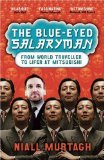 Blue Eyed Salaryman: From world traveller to lifer at Mitsubishi
by Niall Murtagh. What happens when a footloose free spirit settles down and joins a conservative corporation? Well, he’s shocked and frustrated by the rules, discipline and pressure to conform – but what makes this book so fascinating is that he actually finds it just as big an adventure as traveling the world. An entertaining story of culture-clash – that is as much about personal differences as national ones.
Blue Eyed Salaryman: From world traveller to lifer at Mitsubishi
by Niall Murtagh. What happens when a footloose free spirit settles down and joins a conservative corporation? Well, he’s shocked and frustrated by the rules, discipline and pressure to conform – but what makes this book so fascinating is that he actually finds it just as big an adventure as traveling the world. An entertaining story of culture-clash – that is as much about personal differences as national ones.
 Tokyo a certain style
by Kyoichi Tsuzuki. If you’ve ever wondered how Japan crams 30 million people into one compact metropolis, this book is for you. It’s a photographic record of how Tokyoites really live – a peek into the cramped and cluttered homes of ordinary Japanese.
Tokyo a certain style
by Kyoichi Tsuzuki. If you’ve ever wondered how Japan crams 30 million people into one compact metropolis, this book is for you. It’s a photographic record of how Tokyoites really live – a peek into the cramped and cluttered homes of ordinary Japanese.
 Seeing Tokyo
by Kaori Shoji and Graham Fry. Old and new, cool and nerdy, work and play: this book has it all. Vivid photos let you immerse yourself in the diversity of the great metropolis from the comfort of your armchair. Seeing Japan, the companion book, has equally breathtaking photos, but this time covering the whole country.
Seeing Tokyo
by Kaori Shoji and Graham Fry. Old and new, cool and nerdy, work and play: this book has it all. Vivid photos let you immerse yourself in the diversity of the great metropolis from the comfort of your armchair. Seeing Japan, the companion book, has equally breathtaking photos, but this time covering the whole country.
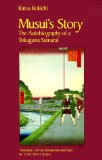 Musui’s Story: Autobiography of a Tokugawa Samurai
by Katsu Kokichi. This book is a translation of an autobiography written by a samurai living in early nineteenth-century Tokyo, when Japan was still closed to outsiders. What makes it fascinating is that, by his own admittance, he was a terrible samurai, preferring to drink, brawl and cavort in the pleasure quarters, than to honour the spirit of his ancestors. Written in an informal and upbeat style, we get a unique insight into the lives of ordinary people in a society that was quite unaware of the rapid transformation that would soon follow, as Japan finally opened up to the modern world.
Musui’s Story: Autobiography of a Tokugawa Samurai
by Katsu Kokichi. This book is a translation of an autobiography written by a samurai living in early nineteenth-century Tokyo, when Japan was still closed to outsiders. What makes it fascinating is that, by his own admittance, he was a terrible samurai, preferring to drink, brawl and cavort in the pleasure quarters, than to honour the spirit of his ancestors. Written in an informal and upbeat style, we get a unique insight into the lives of ordinary people in a society that was quite unaware of the rapid transformation that would soon follow, as Japan finally opened up to the modern world.
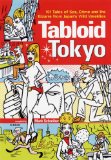 Tabloid Tokyo: 101 Tales of Sex, Crime and the Bizarre from Japan’s Wild Weeklies
The Japanese may be portrayed as reserved and conformist – but this book shows that they enjoy sensationalised tales of the weird and the sordid just as much as we do. Consisting entirely of translated articles from Japan’s news magazines, this is a very entertaining read.
Tabloid Tokyo: 101 Tales of Sex, Crime and the Bizarre from Japan’s Wild Weeklies
The Japanese may be portrayed as reserved and conformist – but this book shows that they enjoy sensationalised tales of the weird and the sordid just as much as we do. Consisting entirely of translated articles from Japan’s news magazines, this is a very entertaining read.
 A Ride in the Neon Sun
by Josie Dew. Josie Dew flies into Tokyo with virtually no knowledge of Japan, unpacks her bike, and sets off cycling. What follows is an amusing chronicle of a chaotic trip across the length of the country, during which she gradually comes to understand Japan, and falls in love with its people.
A Ride in the Neon Sun
by Josie Dew. Josie Dew flies into Tokyo with virtually no knowledge of Japan, unpacks her bike, and sets off cycling. What follows is an amusing chronicle of a chaotic trip across the length of the country, during which she gradually comes to understand Japan, and falls in love with its people.
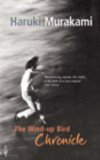 The Wind-up Bird Chronicle
by Haruki Murakami. I’m cheating a bit with this one, as it’s not really a book,
about Japan – but it is by a Japanese author, and most of it is set in Japan. If
you’ve never read Murakami before, be prepared for something unusual. The storyline
is mainly about a married man, who has taken a break from his career to become a
house-husband for a bit, while he relies on his wife to pay the bills. This story
clearly already challenges many firm rules of Japanese society – where men are
defined much more by their occupation than they are in the West, and where it remains
the husband’s duty to provide for the wife, not the other way around. We also
read about the adventures of a Japanese soldier taken prisoner by the Russians
in the period leading up to World War Two. There are many parallels between
the events that befall that soldier and those of the house-husband in Japan,
and many mysterious characters come and go. It’s very hard to make sense of
what’s really happening, or to be sure which bits (if any) are imagined
occurrences and which really happened – and I have yet to find anyone that
has managed to make much sense of the plot. But somehow or other, the book
is such a compelling read that it’s hard to put down. I have no idea why, or
what it is that makes this book so fantastic – but this is the book that proved that Murakami is
one of the greatest literary geniuses of all time – or at least that’s
the opinion of my humble self, as well as thousands of his devoted fans.
The Wind-up Bird Chronicle
by Haruki Murakami. I’m cheating a bit with this one, as it’s not really a book,
about Japan – but it is by a Japanese author, and most of it is set in Japan. If
you’ve never read Murakami before, be prepared for something unusual. The storyline
is mainly about a married man, who has taken a break from his career to become a
house-husband for a bit, while he relies on his wife to pay the bills. This story
clearly already challenges many firm rules of Japanese society – where men are
defined much more by their occupation than they are in the West, and where it remains
the husband’s duty to provide for the wife, not the other way around. We also
read about the adventures of a Japanese soldier taken prisoner by the Russians
in the period leading up to World War Two. There are many parallels between
the events that befall that soldier and those of the house-husband in Japan,
and many mysterious characters come and go. It’s very hard to make sense of
what’s really happening, or to be sure which bits (if any) are imagined
occurrences and which really happened – and I have yet to find anyone that
has managed to make much sense of the plot. But somehow or other, the book
is such a compelling read that it’s hard to put down. I have no idea why, or
what it is that makes this book so fantastic – but this is the book that proved that Murakami is
one of the greatest literary geniuses of all time – or at least that’s
the opinion of my humble self, as well as thousands of his devoted fans.
 Memoirs of a Geisha
by Arthur Golden. I’m going to be a bit controversial by including this one –
which is now also a ‘major motion picture’. Again it’s not strictly a
book about Japan, but a novel set there, this time chronicling the life of a girl sold
to a Kyoto geisha house at the age of nine, and then trained in music, dance and the
graceful conduct required by her profession. It was written by an American,
but one who did his research very thoroughly, and all the details of the Geishas’
lives seems consistent with what I’ve learned from other sources. But what do I
know – I’m just a foreigner – and it seems to have offended many Japanese people
that an outsider should have taken it upon himself to document such a treasured aspect
of their national culture – especially as he highlighted the negative aspects
of the Geisha tradition as much as the positive. More than anything else, the
controversy seems to have arisen because the book suggests that Geisha are on occasions
involved in an element of prostitution. (I can’t help thinking that if this
wasn’t true, no-one would really have cared.) I’m going to avoid this issue
as much as possibly by simply noting that the book has
beautiful prose, deep characterizations and a brilliant plot – so is a must read
regardless of its historical accuracy (or lack thereof).
Memoirs of a Geisha
by Arthur Golden. I’m going to be a bit controversial by including this one –
which is now also a ‘major motion picture’. Again it’s not strictly a
book about Japan, but a novel set there, this time chronicling the life of a girl sold
to a Kyoto geisha house at the age of nine, and then trained in music, dance and the
graceful conduct required by her profession. It was written by an American,
but one who did his research very thoroughly, and all the details of the Geishas’
lives seems consistent with what I’ve learned from other sources. But what do I
know – I’m just a foreigner – and it seems to have offended many Japanese people
that an outsider should have taken it upon himself to document such a treasured aspect
of their national culture – especially as he highlighted the negative aspects
of the Geisha tradition as much as the positive. More than anything else, the
controversy seems to have arisen because the book suggests that Geisha are on occasions
involved in an element of prostitution. (I can’t help thinking that if this
wasn’t true, no-one would really have cared.) I’m going to avoid this issue
as much as possibly by simply noting that the book has
beautiful prose, deep characterizations and a brilliant plot – so is a must read
regardless of its historical accuracy (or lack thereof).
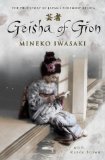 Geisha of Gion: The Memoir of Mineko Iwasaki
by Mineko Iwasaki with Rande Brown. This is the autobiography of one of the most
successful Geisha of modern times. Mineko Iwasaki entered a Kyoto Geisha house at the age of
five, and was legally adopted by the owner, subsequently having little contact
with her parents. She was appointed as heir, so that she
would one day inherit the house herself, and as such she had a very privileged
position. She was given intensive training in traditional dance,
an investment that seems to have paid off, as she rapidly rose to become Japan’s
most famous and successful Geisha, even entertaining The Queen and Prince Charles
when they visited Japan. Even so, she was not entirely happy with many of the
restrictions tradition placed on the lives of geisha, and she shocked
Japan by suddenly retiring at the height of her career.
Geisha of Gion: The Memoir of Mineko Iwasaki
by Mineko Iwasaki with Rande Brown. This is the autobiography of one of the most
successful Geisha of modern times. Mineko Iwasaki entered a Kyoto Geisha house at the age of
five, and was legally adopted by the owner, subsequently having little contact
with her parents. She was appointed as heir, so that she
would one day inherit the house herself, and as such she had a very privileged
position. She was given intensive training in traditional dance,
an investment that seems to have paid off, as she rapidly rose to become Japan’s
most famous and successful Geisha, even entertaining The Queen and Prince Charles
when they visited Japan. Even so, she was not entirely happy with many of the
restrictions tradition placed on the lives of geisha, and she shocked
Japan by suddenly retiring at the height of her career.
Mineko Iwasaki was one of several Geisha that Arthur Golden interviewed during research for his book, but she fell out with him after he revealed her to be one of his sources. (She had broken a strict rule of confidentially by revealing details of Geisha life to him, and had wanted to remain anonymous.) Memoirs of a Geisha is set a generation before Mineko Iwasaki’s time, but it’s fascinating to read the two books together, and to see which traditions had been maintained, and which brought up to date. While work and living conditions for Geisha had certainly improved by Mineko Iwasaki’s time, life for Geisha remained a mixture of sharp contrasts. They may have entertained the rich and famous, and dressed in the best clothes that money could buy, but they were still subject to very strict codes of conduct, and had little control over their own lives. This was especially true for the ordinary Geisha whose lives we glimpse in the background of the book, and who were not as fortunate as Mineko Iwasaki. This book is a fascinating read for anyone who enjoys learning about ways of life that contrast greatly with their own, regardless of whether you had any prior interest in this aspect of Japan.
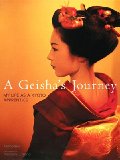 A Geisha’s Journey: My Life As a Kyoto Apprentice
by Komomo, with photographs by Naoyuki Ogino. This last book is about the life of present-day Geisha, and it
reveals that many of the traditional rules are followed as strictly as ever.
While girls are no-longer sold to Geisha houses by their parents, they still
sever most contact with their families when they begin their training, and have to
work long hours, sometimes only getting one day off a month. Each apprentice has
to complete an initial period of service in the Geisha house, where she will be
taught formal manners and etiquette, and indoctrinated into the hierarchical world
of Geisha society. Only then will she begin training in the arts of music and
dance, and later go on to entertain at parties held at traditional teahouses.
A Geisha’s Journey: My Life As a Kyoto Apprentice
by Komomo, with photographs by Naoyuki Ogino. This last book is about the life of present-day Geisha, and it
reveals that many of the traditional rules are followed as strictly as ever.
While girls are no-longer sold to Geisha houses by their parents, they still
sever most contact with their families when they begin their training, and have to
work long hours, sometimes only getting one day off a month. Each apprentice has
to complete an initial period of service in the Geisha house, where she will be
taught formal manners and etiquette, and indoctrinated into the hierarchical world
of Geisha society. Only then will she begin training in the arts of music and
dance, and later go on to entertain at parties held at traditional teahouses.
The book is the story of a fifteen year old girl, Komomo, told in her own words, and richly illustrated with magnificent photographs taken by Naoyuki Ogino. It covers a period of years, as Komomo gradually establishes herself in the Geisha community. Her passion for Japanese tradition really jumps out of the text, as does her dedication and strength of personality. Few people of any age, let alone teenagers, would give up so many of the luxuries of modern life, no matter what the reward, and so it should come as no surprise that most maiko quit early in their training. It is not just the insight into Geisha culture and the exquisite photographs that make this book a must read – but also the personal story of Komomo herself. Most aspects of the Geisha world are completely alien to anything I have experienced myself, and many make me somewhat uncomfortable – not least the appropriateness of recruiting girls so young. But none of that detracts from my admiration for Komomo, both for her dedication, and for fulfilling her aspirations at such a young age.
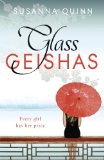 Glass Geishas
Susanna Quinn’s first novel takes us on an adventure into a hidden world of sex, drink and drugs. We follow the lives of white women who try to make easy money by chatting and flirting in Tokyo’s hostess bars. Can they get out with the cash before being sucked deeper into Japan’s multifarious sex industry, or will they be spat out as broken wrecks?
Glass Geishas
Susanna Quinn’s first novel takes us on an adventure into a hidden world of sex, drink and drugs. We follow the lives of white women who try to make easy money by chatting and flirting in Tokyo’s hostess bars. Can they get out with the cash before being sucked deeper into Japan’s multifarious sex industry, or will they be spat out as broken wrecks?
Susanna Quinn is well placed to tell us about these women – she was one herself. Hostesses live on the edge of society in a world ruled by money and gangsters. Our protagonist soon finds out that you look after yourself first and trust no one. It’s an easy fast-paced read, full of well-developed characters ranging from a clueless British journalist to a kind but unsympathetic Geisha.
This may be a work of fiction – but I have no doubt that Susanna met all of these people during the time she spent in Tokyo. The story is as informative as it is entertaining, making this book a must read for anyone interested in alternative lifestyles and the people who live them.
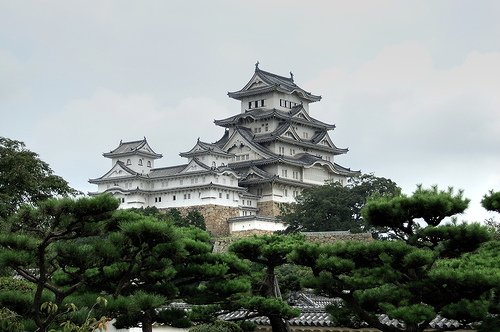
The central towers of Himeji castle. Miraculously, the castle has survived war and earthquakes, and remains in pristine condition despite being over 400 years old – making it a real rarity in Japan, where buildings quickly wear out due to frequent tremors, and are prone to burning down due to their wooden construction
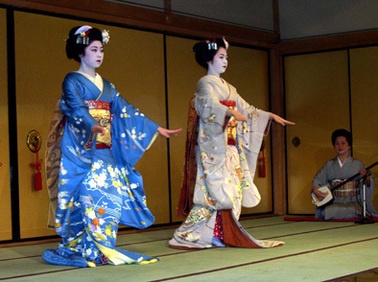
Two maiko (young apprentice Geisha) dance to the accompaniment of a shamisen, in the Gion district of Kyoto. Geisha and maiko have traditionally performed in private to small groups of privileged guests, and it was only possible to see them perform in public on rare occasions, such as at the annual Miyako Odori dances held each April at the Kaburenjo Theater in Gion. Nowadays special performances are put on for tourists – well worth seeing – but not comparable to the authentic traditional experience
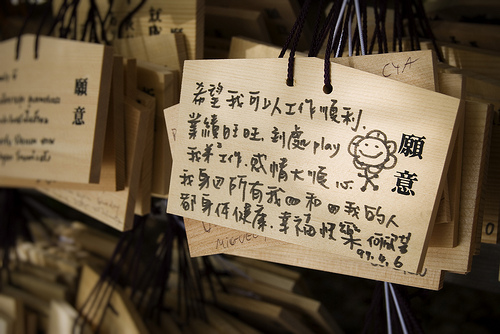
Prayer cards left by visitors to the Meiji Jingu shrine in Tokyo, in the hope that the spirit of Emperor Meiji will help their wishes to come true

